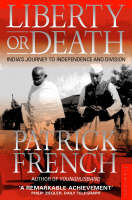


|
|
| book details |
Liberty or Death: India's Journey to Independence and Division
By (author) Patrick French

|
| on special |
normal price: R 190.95
Price: R 180.95
|
| book description |
'A remarkable achievement' Philip Ziegler, Daily Telegraph 'Brilliant!There can be no doubt that Patrick French is the most impressive Western historian of modern India currently at work' Frank McLynn, Glasgow Herald At midnight on 14 August 1947, Britain's 350-year-old Indian Empire cracked into three pieces. The greatest mass migration in history began, as Muslims fled north and Hindus fled south, over a million being massacred on the way. Britain's role as world power came to an end, and the course of Asia's future was irrevocably set. Using a compelling mixture of scholarship, travel and personal narrative, Patrick French offers a radical reinterpretation of the events surrounding India's independence and partition, including the disastrous mistakes made by politicians, and the bizarre reasoning behind many of their decisions. Exploring the interplay between characters such as Churchill, Mountbatten and Gandhi, it reveals a fascinating tale of idealism and manipulation, hope and tragedy. With sources ranging from newly declassified secret documents to the memories of refugees, Patrick French gives a riveting account of an epic debacle, the impact of which reverberates across Asia to this day.
| product details |

Normally shipped |
Publisher | HarperCollins Publishers
Published date | 5 May 1998
Language |
Format | Paperback
Pages | 352
Dimensions | 122 x 201 x 31mm (L x W x H)
Weight | 372g
ISBN | 978-0-0065-5045-7
Readership Age |
BISAC | history / asia / india & south asia
| other options |
|
|
|
To view the items in your trolley please sign in.
| sign in |
|
|
|
| specials |
|
|

|
Carlo Rovelli
Paperback / softback
208 pages
was: R 295.95
now: R 265.95
|
|

|
Carlo Rovelli
Paperback / softback
224 pages
was: R 295.95
now: R 265.95
|
Originally published in Italian: L'ordine del tempo (Milan: Adelphi Edizioni, 2017).
|
|
|
|